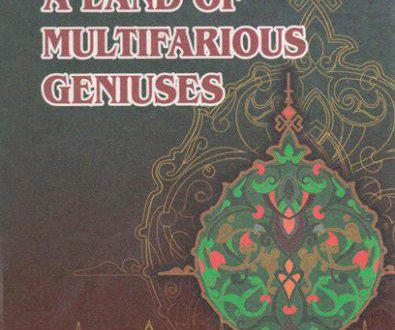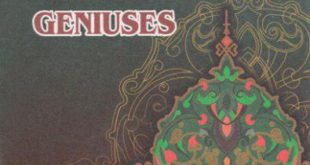The invaluable services made by our great ancestors in discovering the real essence of Islam in matters of educating mature and spiritually highly estimated people are well known throughout the world. Alongside with this fact in the history of religion, our great ancestors made a substantial contribution into the spiritual fight against different parties and groups of separation. One of the most acknowledged and estimated figures in this field from Nasaf was our great ancestor and highly appreciated scholar Abu Muti’ Makhul an-Nasafi.
His full name was Abu Muti’ Makhul al-Fazl an-Nasafi but we do not have enough information at our disposal about his date of birth. As to his date of death, the historical sources provide the year of 318/930. Abu Muti’ Makhul an-Nasafi is known with his great amount of knowledge and high level of education and as a founder of a famous dynasty which has been famous throughout the history from generation to generation: For instance, his son Muhammad ibn Makhul was one of the lawyers of the Hanafian order who has reached the highest status of his time. Therefore, the author Ibn Abu-l-Yafi’i provided worthy and appreciative information in his five-volume book “Al-Javahir al-muziya fi tabaqat al-Hanafiya” (Bright Pearls among the Scholars of the Hanafian Order) devoted to the history of lives and scientific careers of the Hanafian scholars.
His grandson Ahmad ibn Muhammad ibn Makhul an-Nasafi was born in 943 in Nasaf. In his career, he also reached the level of a well-known lawyer of his time in the Hanafian order. He lived in Bukhara for several years and died there in 989. His corpse w,i brought to Nasaf and buried there. One of his nephews Abu I Ma’ali al-Mu’tamad an-Nasafi al-Makhuli lived in the second hall of the 10th century and became known as one of the scholars of his time who had devoted his life and career to the development of science and education.
It should be noted that among the representatives of this dynasty Abu-l-Muin an-Nasafi (1027-1114) reached the highest level in the field of science and education. We have mentioned in the previous articles that Abul-Muin an-Nasafi succeeded in developing and spreading the teachings of the Maturidiya School of kalam founded by Abu Mansur al-Maturidi throughout the countries of the East.
Makhul an-Nasafi was known as a lawyer and expert in the science of kalam and Sufism. The researchers of his scientific activity mention the following works belonging to his pen:
- “Kitab fi-t tasawuf” (A book on Sufism);
- “Kitab al lu’li’yat fi-l-mava’iz” (Pearls of morality);
- “Kitab fi fazli Subhan Allah” (A book about the peculiarities of Subhan Allah);
- “Ash-Shu’a” (Ray);
- “Kitab ar-radd a’la ahl al-bid’at va-l-ahva” (A book of
refusal to the representatives of “bid’at” and “havais”).
His book “Kitab al lu’li’yat fi-l-mava’iz” is one of the books written in the field of morality consisting of 135 chapters. It deals with the advice and recommendations having to do with admonitions that might be very useful for the common people. A Turkish researcher Fuad Sezgin considers that “Kitab fi fazli Subhan Allah” belonged to Makhul an-Nasafi. The manuscript of his book “Ash-Shu’a” reached us is devoted to the description of the rules of Islam, especially the order of performing the prayers. Hajji Khalif mentions short information about this book in the book “Kashf az-zunun”.
It is without doubt that Makhul an-Nasafi’s “Kitab ar-radd a’la ahl al-bid’at va-l-ahva” is the most appreciated book from the scientific and practical points of view. It is well known that during the Middle Ages there were lots of small groups and parties who were separated from the main root of Islam and made a noticeable harm to Islam by spreading different erroneous ideas and explanations of the essence of the religion. According to a German researcher I Jhich Rudolf, “Kitab ar-radd” was written in the 10th century in Maveraunnahr and one might get from this precious and rare source necessary materials about those parties and groups that were separated from the main root of Islam.
The author divided these parties into six groups such as “qadariya”, “jahmiya”, “rafiziya”, “haruriya”, “jabariya” and “murji’a”. In their turn, each of these groups was also subdivided into 12 smaller parties forming in total 72 parties and groups. The author provided important materials characterizing each of them separately. This book is considered to be one of the earliest and most precious sources which gives perfect and quite reliable information about the history of separated groups characterizing them from the Hanafian point of view. The fact that the book provides necessary material for the comparative study of the essence of these parties makes it more important. Another important feature of this book lies in the fact that some of the groups mentioned in it are not spoken of at all in the books written in later periods. For instance, a group of the “qadariya” trend called “ahmadiya” may be shown as an example of this opinion.
The only sample of this precious manuscript is preserved in the Bodleian Library of Oxford University under the code of 271. The manuscript consists of 145 pages. It was copied in 1143, i.e. after 213 years of the author’s death, by an unknown scribe.
In 1980, a French researcher Maria Bernand, who had carried out investigations on this rare source, succeeded in publishing it in the 16th volume of the scientific journal “Al-Havliyyat al-islamalujiyya” which was published in Cairo. Preparing the critical text of the manuscript, Maria Bernand added a preface to this book consisting of 12 pages which includes lots of new information about the language, style and the essence of the book. Thanks to this edition made by Maria Bernand, a wide range of readers, especially the investigators got an access to this precious book.
 Imom Buxoriy xalqaro ilmiy-tadqiqot markazi bukhari.uz
Imom Buxoriy xalqaro ilmiy-tadqiqot markazi bukhari.uz










